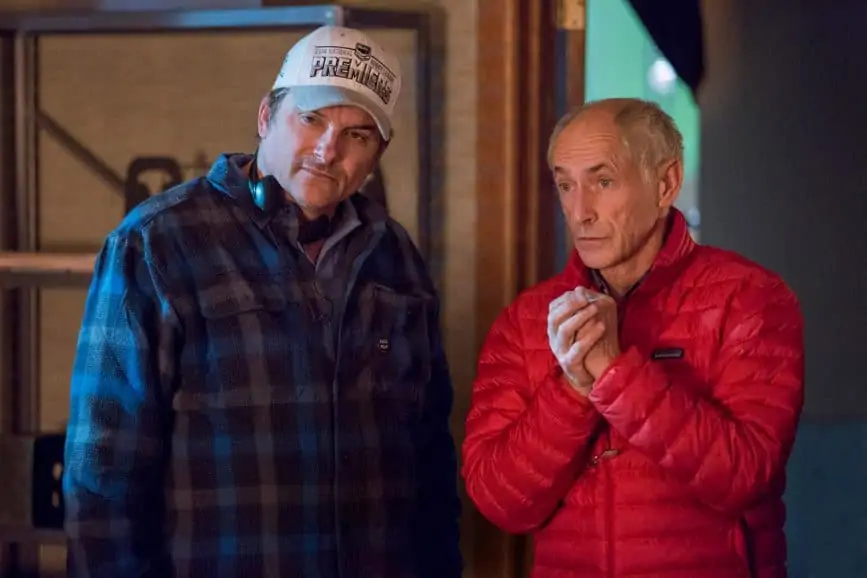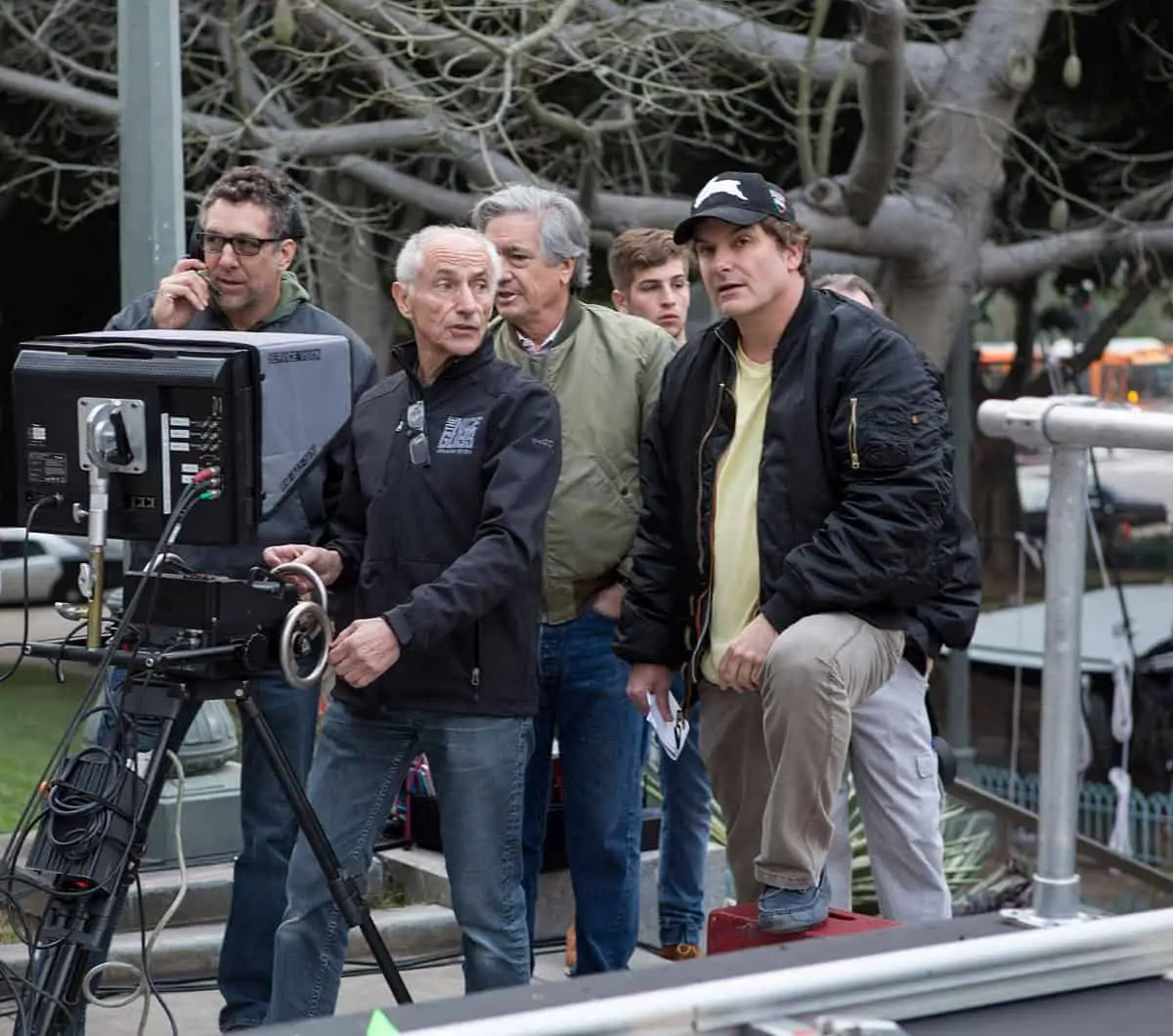LIGHT FANTASTIC
Philippe Rousselot ASC, AFC has been fêted with BAFTA, Cesar and Oscar and was the 2020 recipient of the Camerimage Lifetime Achievement Award. The distinguished French cinematographer tells British Cinematographer about his filmmaking philosophy.
“I was sent to a winter camp aged 11,” recalls Rousselot of his cinematic awakening in 1956. “I was on my own and unhappy but there was a cine club which I snuck into. It was mostly adults but there I discovered cinema. I went every night for two weeks and saw a treasure trove of films from German expressionism to Jean Cocteau, Hollywood melodrama and Italian neo realists. When I got home, I told my mother I wanted to make films, period. She is not alive now but I would tell her the exact same thing today.”
Much later, he reflected on why this experience had had such profound effect. “I equated it, pretentiously perhaps, to Plato’s cave.” The allegory contains symbolism about the nature of physical reality and the perception of truth.
“It’s the idea that you are transposed into another world by the magic of light projected onto a screen,” Rousselot says. “It’s not that I hadn’t seen films before but it was the moment where I became very conscious that there were people behind the camera making decisions that influenced what I was being shown.”

While studying at l’École Louis Lumière he was drawn to cinematography over crafts like editing. “It is not in my nature to stay in the same place for days and days,” he says. “I want to explore the world.”
Rousselot began his career as camera assistant on several Eric Rohmer films. The first was Ma Nuit Chez Maud (1969), where he was apprentice to esteemed cinematographer Nestor Almendros.
“His philosophy was to reinvent filmmaking by using your own reflections of nature and observations of human behaviour. He had no experience of classical filmmaking and there was a very high pressure to do things conventionally. But Nestor found his own way because he had a fabulous eye and the intelligence to ask the right questions. He figured out that the best way to achieve a very soft and natural light was to use bounce light. That’s a direct result of him thinking how to do things regardless of tradition.
“So, when I began to light shots I wasn’t thinking about traditional three-point lighting. That is archaeology.”
Rousselot pioneered use of Chinese lanterns mounted on booms, to provide a soft moving source that follows the actors.
“If you have a camera in a certain position and an actor moves toward you then using direct lights or even bounce light, when the actor is far away you have very little light and as they move the amount of light increases,” he explains. “But that’s not what happens in real life. The natural light from the sun is so far away you don’t have this lighting progression. In order to have constant light on a moving actor, the light should move with them. How do you do that with 5K or 10K Fresnels? It’s impossible. You need something lighter.
“Secondly, if you want soft light on an actor’s face the determinant is not the softness of the light itself but the angle of the light. Now, if you place a small lantern very close to the face it is the same softness as the big white bounce 10ft behind the camera because the angle is exactly the same. The difference is that you no longer have a big wide source behind the camera flooding everything. The Chinese lanterns allow me to throw very soft light on faces with practically no lights in the background so I can isolate the actor from the background.”

He began this technique in the early ‘80s using a rudimentary dimmer board to change the light according to camera moves.
“When I had complicated movements to film I would light a specific way at the beginning of a shot differently to the middle and end of the shot. By using multiple soft sources I would change the setting subtly during the shot. At the end of the shot you are not encumbered by the lighting you had at the beginning.”
He continued trialling Chinese lanterns on handheld or sound booms in films leading up to 1986’s Hope and Glory. The extensive use of the technique for director John Boorman’s biographical wartime drama was recognised with an Oscar nomination.
A few years earlier, Rousselot gained international attention for his work on Jean-Jacques Beineix’ cult thriller Diva. Together with DPs like Carlo Varini and Jean-Yves Escoffier he essayed ‘cinema du look’ criticised and lauded, depending on your taste, for putting style over substance.
“I don’t know where it came from but we wanted to use colour in a different way than we were told to,” says Rousselot. “There was an appetite for the use of colour for dramatic reason, or maybe just aesthetics, but mostly we wanted to create moods rather than simply see everything.
“Diva was a very bold use of colour for the time. Now, it’s a common part of film language.”
He recounts the struggle to break from convention. “On one film I was yelled at by the lab technician because my colour temperature was not right. I had to tell him that a sunset should have a little bit of red but they weren’t happy about it. Maybe the audience was not ready to see totally blue or red images?”
Diva won Rousselot a first César Award and his English language film career took off. He worked for directors including Stephen Frears (Dangerous Liaisons) and Philip Kaufman (earning a second Oscar nod for Henry & June), winning the Academy Award for Robert Redford’s 1992 A River Runs Through It (for whom he later shot Lions for Lambs).


Neil Jordan’s Interview with the Vampire, Patrice Chéreau’s La Reine Margot, and Miloš Forman’s The People vs. Larry Flynt followed. With Tim Burton he made Big Fish, Planet of the Apes, Charlie and the Chocolate Factory; with Guy Ritchie (Sherlock Holmes) and he helped recreate the Harry Potter cinematic universe for David Yates’ Fantastic Beasts and Where to Find Them and The Crimes of Grindelwald.
“The director picks me,” he says modestly. “When John Boorman asks if you want to do Emerald Forest you say ‘yes!’ and you don’t regret it. I’ve done three with him (the other being The Tailor of Panama) and wish I had done more. I wish I could have done more with Tim, and with Neil. I would have loved to do six films. I’m not giving up – hopefully there’s time yet.”
I also enjoy the mechanics of comedy. Learning why a certain camera position or angle makes you laugh and a slightly different position doesn’t. You never know before you try.
Philippe Rousselot ASC AFC
Perhaps the trick to securing such respect lies in interpreting the director’s intent whilst knowing when to suggest his own creative ideas.
“It all depends on the director. I don’t need to tell Tim… he knows what he wants. John instinctively knew what was in frame, how his actors performed, without looking at a monitor.”
There have been times when his relationship with a director didn’t go to plan. “There were two films I didn’t finish. One I left because I felt that there was no way I could get along with the director and the other was a big misunderstanding and I was fired. He was right to do so.”
He continues, “I always feel that you are given something to look at which narrows your range of interpretation. I’m not saying this is bad. If it’s raining outside then there is no interpretation necessary, you acknowledge the situation you are in (unless it’s really bad for storytelling and you shoot another day). On a soundstage you supposedly have an infinite range of choices but that’s not correct either. You are given sets, costumes, actors and you have to go with the logic of that. I don’t think it is reductive—it is part of the job to understand the way the situation dictates you.”
There’s also no doubt that Rousselot’s artistic curiosity leads him to seek out directors with a fresh perspective. He is currently in post on Without Remorse for Stefano Sollima, the first military action film Rousellot has done.

“I was surprised when I was asked to do The Nice Guys (dir. Shane Black). I’ve done films with comedy, notably Bertrand Blier’s Merci La Vie, but I’d forgotten how much I enjoyed laughing on the set. I also enjoy the mechanics of comedy. Learning why a certain camera position or angle makes you laugh and a slightly different position doesn’t. You never know before you try.”
The Nice Guys was also Rousselot’s first digital project. “I am happy that we can still have a choice to shoot film even if that choice is not one you make on your own. Never underestimate the economics of the film you work on.
“Digital is now a fantastic tool. I would love to shoot film again but as long as film is not projected as film then I feel its beauty gets a little lost.”
He has said that he works best under a sense of terror, similar perhaps to the nervous tension an actor gets before appearing on stage.
“It’s very true. The moment you get confident you have to raise the alarm, there is something wrong. It is not a pleasant state to be in terror but the first day on a shoot is horrible.”
Rousselot tends not to look back at his past work, saying he would wish he could shoot it again. “I remember going to dailies once and almost jumped off my seat when I saw a shot with an actor in front of a brown wall. His costume was brownish and greyish and it looked like he was made of the same substance as the wall behind him. It was an ordinary shot but in my mind it was really beautiful.
“You see, I understood then something about colour which I had not understood before. That with black and white you create perspective and separate layers of a scene using back light and side light. Colour doesn’t work like that. Colour wants to blend. You can see this in classical painting. “I could show you this shot and you would wonder what all the fuss was. It was in one of the first films I ever did – and for me it was an illumination.”










